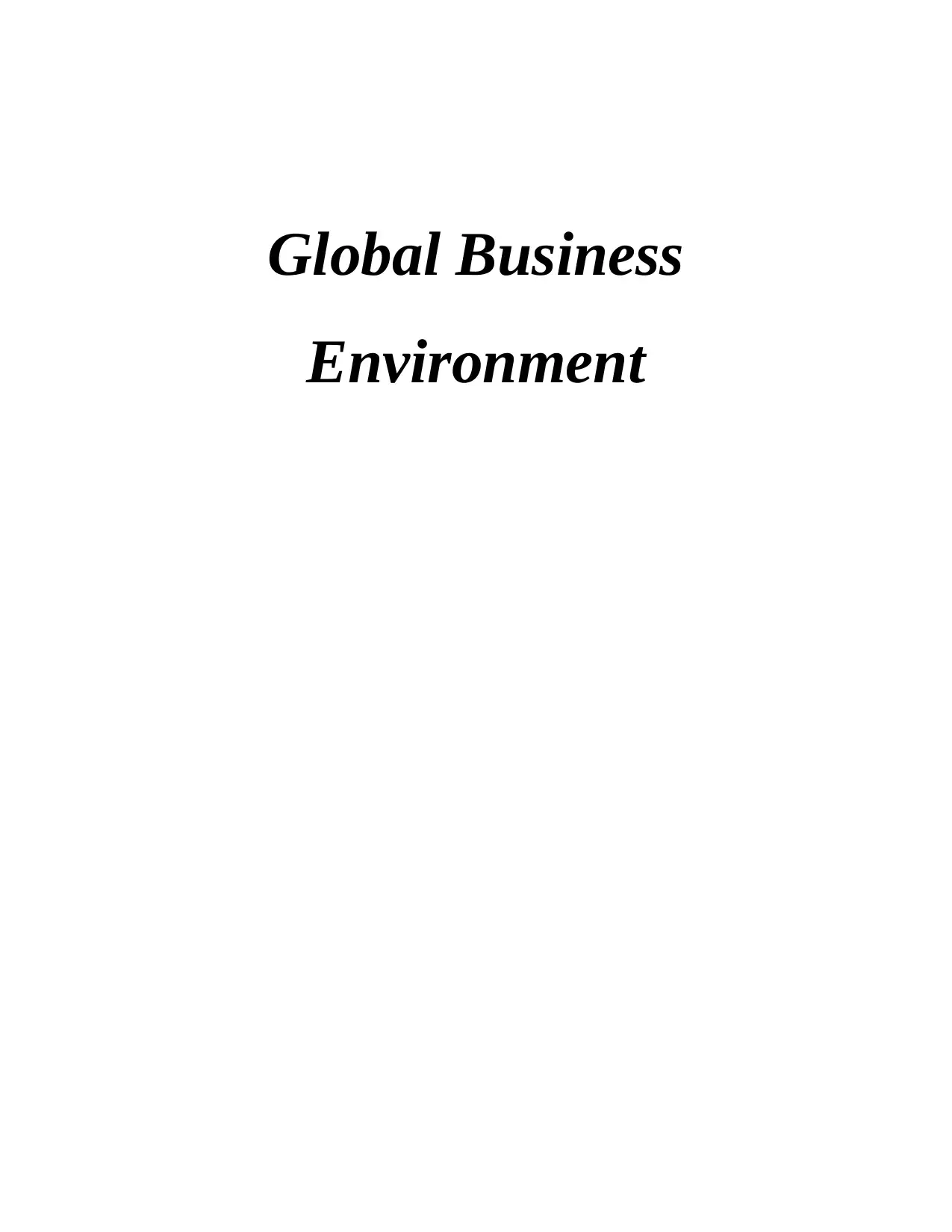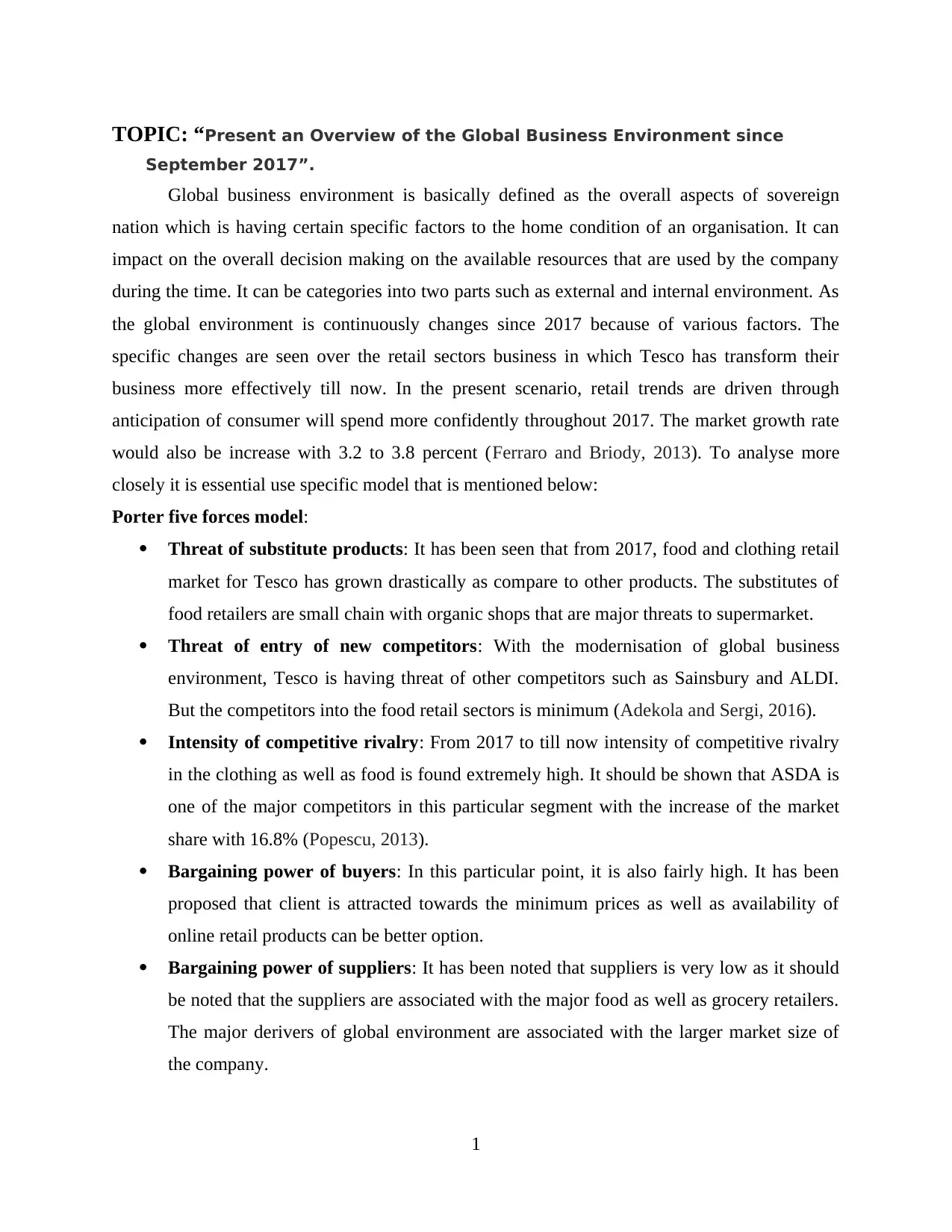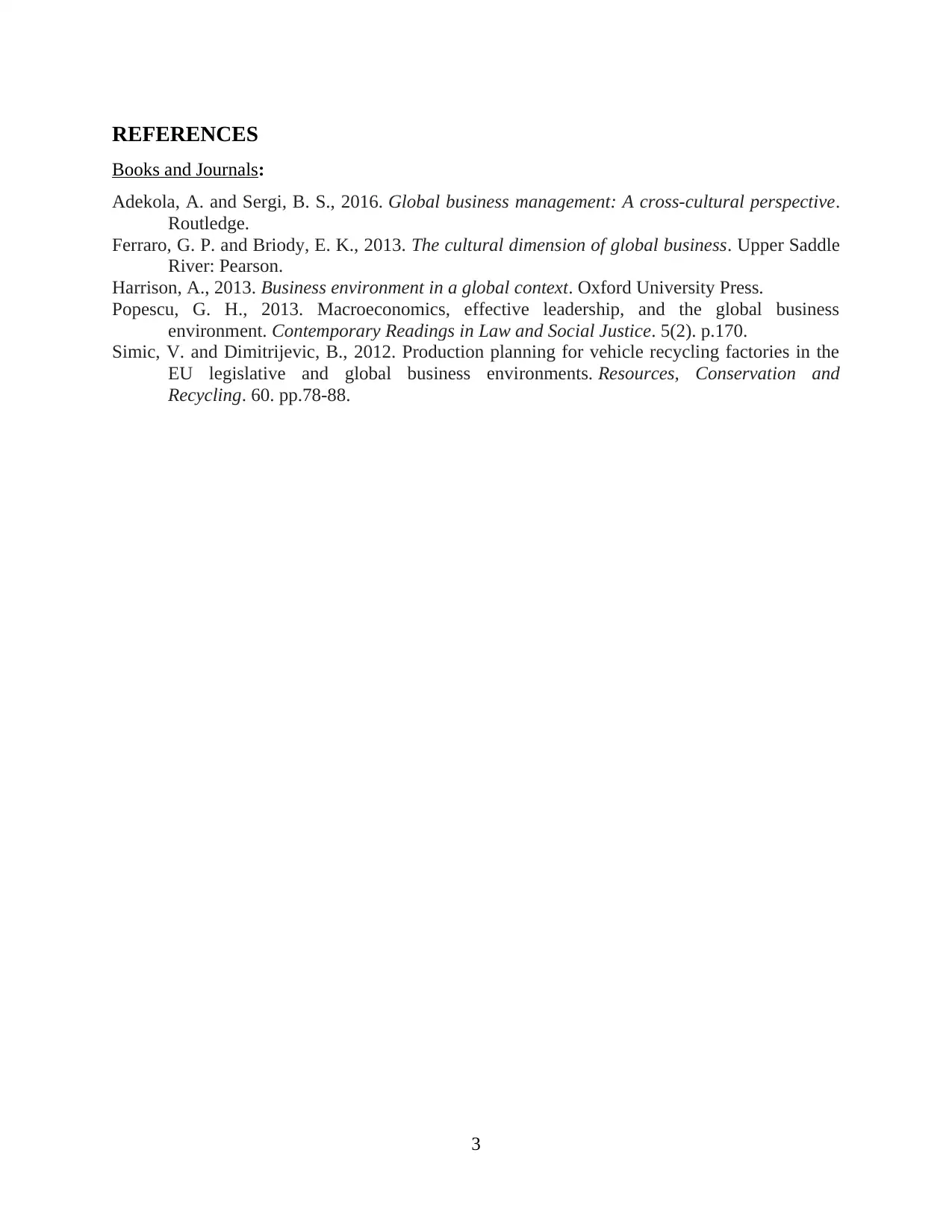Analysis of Global Business Environment Trends Since September 2017
VerifiedAdded on 2020/10/22
|5
|747
|131
Report
AI Summary
This report provides an overview of the global business environment since September 2017, focusing on the retail sector and the strategic adaptations of Tesco. It examines the external and internal environments, analyzing changes driven by consumer behavior and market growth. The report applies Porter's Five Forces model to assess threats and competitive dynamics, particularly in the food and clothing retail markets. It also explores Porter's generic strategies, including cost leadership, differentiation, and focus strategies, to determine how companies like Tesco can structure their business in response to environmental factors. The analysis highlights key market trends, competitive rivalries, and supply chain dynamics, supported by references to relevant academic sources.
1 out of 5











![[object Object]](/_next/static/media/star-bottom.7253800d.svg)